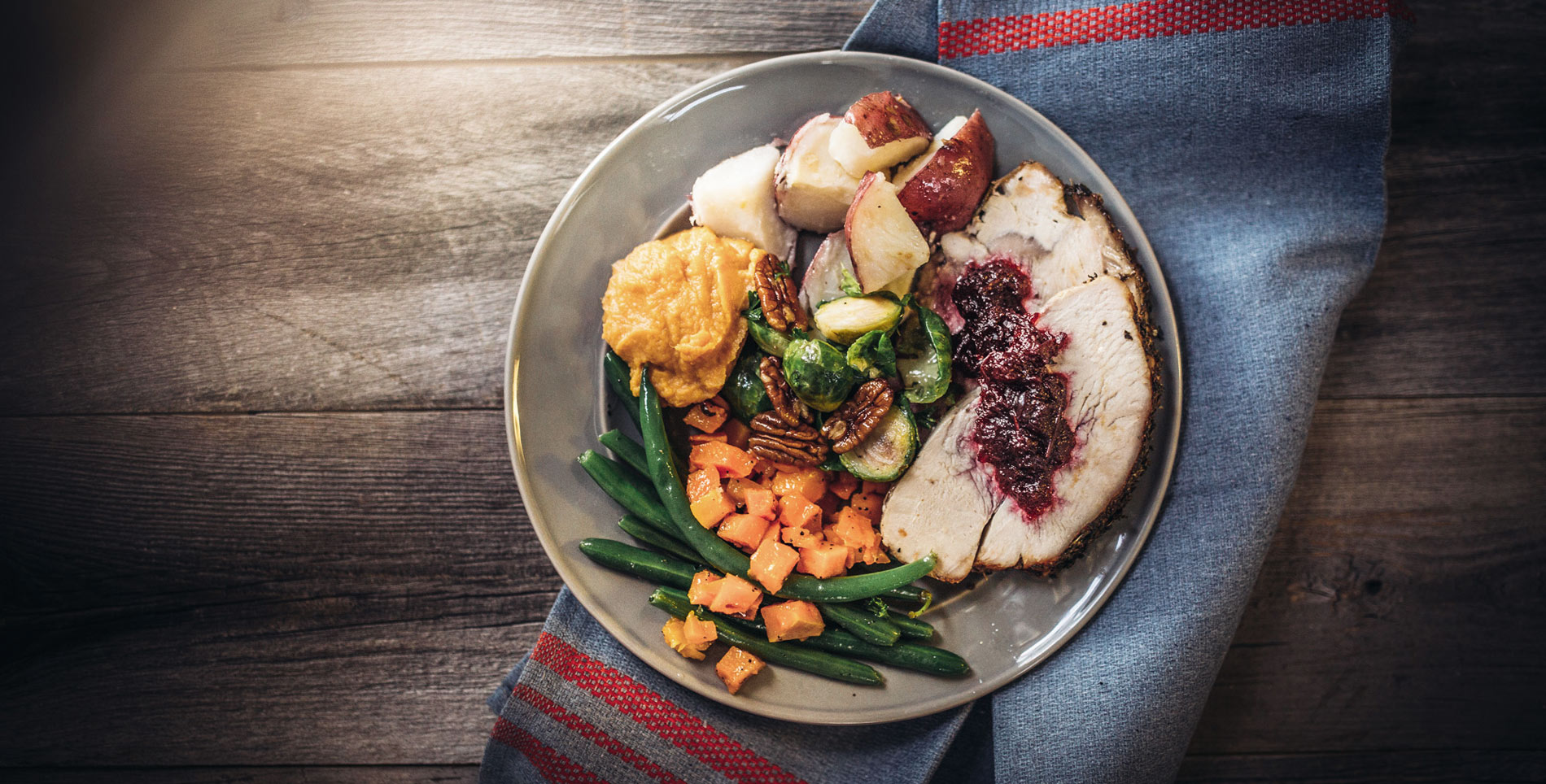What is the true story of Thanksgiving? The version most American children are taught goes something like this: the Plymouth colonists (or Pilgrims) celebrated their first corn harvest with the Wampanoag and Pequot where a turkey was the centerpiece of this communal meal. While we may never know the exact characters who sat at that first feast, it is on their story that we base our modern tradition. Many staple ingredients of a classic Thanksgiving dinner are indigenous to North America and are based on “The Three Sisters”—the three staple crops of the Iroquois’ agricultural system (corn, beans and squash)—and of course, turkey. But today, what is even more American than those items grown in our native soil is the way in which different cultures create their unique version of Thanksgiving by combining these staple items with their own experience.
Growing up, after learning this original story, my Thanksgiving dinner always seemed amiss. We had versions of standard dishes, but my mother is from Puerto Rico and the cuisine of the island played out across our table. I would find arroz con gandules beside mashed potatoes with olives. Dishes were seasoned liberally with Goya-brand adobo, and most involved pernil (pork shoulder) in some way. In fact, the only dish that loosely resembled classic Thanksgiving dinner was the turkey.
Of course, turkey often plays the lead role in the traditional holiday story. Long before the first Thanksgiving, the pilgrims, or even Christopher Columbus, turkey was a staple food for many indigenous people in North America. In central Mexico roughly 2,000 years ago, the Aztec had domesticated turkeys in a very loose fashion. The huehxolotl, as the Aztecs called them, were kept primarily for their feathers, which were used in ceremonial rituals. And turkeys were associated with Chalchiuhtotolin, a turkey-like deity, who in the Aztec pantheon was the god of pestilence and disease.
But while the Aztecs kept the birds for their more utilitarian attributes in Mexico, the Algonquian tribes in the northeast were hunting its wild relative; and as one Thanksgiving origin tale tells it, the Pilgrims went on a game hunt prior to their harvest celebration and brought back a handsome bird to cook. I always thought there was something a little strange about my family’s turkey when compared to a more “traditional” iteration. We cooked ours in the oven, which seemed normal enough, but nowhere in the Thanksgiving stories did I hear about olives, peas and pork in the stuffing.
Fortunately, I found kindred spirits in the home of my friend Joshua where his Thanksgiving dinner seemed as far from tradition as my own. At Joshua’s house, his uncle deep-fried their turkey, made cornbread stuffing, and served collard greens studded with salt pork. Joshua’s family also had most of the classic ingredients, but like my family, they took a very different approach.
Both of our families observed the three sisters to some degree. As one Thanksgiving story goes, a Patuxet man named Squanto taught the Plymouth colonists how to harvest corn, thus kicking off the entire celebration. While my family’s table didn’t typically offer this sister, Joshua’s family served creamed corn. His grandmother would spoon it on my plate and say, “This is how my mama taught me how to make it back home”—her home being the state of Georgia.
And then there were the beans. Green bean casserole was created in the 1950s by Campbell’s Soup Company as a way to incorporate their cream of mushroom into the holiday meal. My family indeed was the casserole type—in fact, it may have been the one dish that didn’t include pernil or adobo.
For the last of the three sisters, the squash in question is most commonly pumpkin; and in most Thanksgiving stories, it shows up at the end of the meal in the form of everyone’s favorite pie. But if you’re like me, you had cazuela—a sweet potato, pumpkin and coconut pie that is intrinsically Puerto Rican. Joshua’s family made their finales with sweet potato or pecan, because like the creamed corn, those were from his grandmother’s childhood too.
Whatever your Thanksgiving story, you can rest assured that what makes it truly American is to make it distinctly your own. Regardless of your take on classic ingredients, the story of Thanksgiving is one of cultural diffusion—an exchange of ideas and customs. And the turkey, this quintessentially American bird, as Benjamin Franklin called it, is a perfect analogy for your Thanksgiving story—you have the freedom to prepare it how you like.



Our comments section is for members only.
Join today to gain exclusive access.